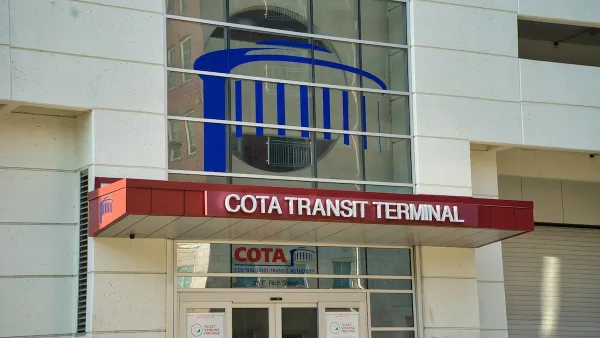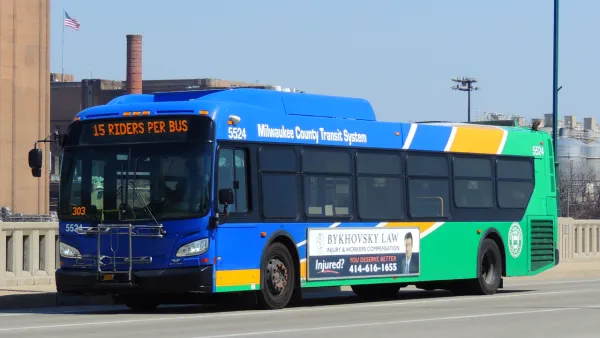Mexico City's emergence as a "commuter's paradise" due to a focus on people and places, rather than cars and driving, has earned the city this year's Sustainable Transport Award from the Institute for Transportation and Development Policy (ITDP).

Josie Garthwaite details how the Mexican capital's embrace of bicycles, pedestrian-friendly plazas and walkways, new bus lines, and parking meters (?), has transformed it from commuter hell to paradise in just a couple of years.
"'They really changed quite fundamentally the direction and vision of the city, and a lot of it was in 2012,' said Walter Hook, chief executive of ITDP, an international nonprofit that works with cities to reduce greenhouse gas emissions and improve quality of urban life."
"Since 2011," explains Garthwaite, "Mexico City has added two new bus corridors to its Metrobus system, connecting the narrow streets in the historic center to the airport and making it the longest bus rapid transit (BRT) system in Latin America. The city also added nearly 90 stations and 1,200 new bicycles to the Ecobici bike-sharing program, began to reform on-street parking, improved sidewalks, and established new walkways. Cars were removed entirely from some narrow streets to make room for free flow of buses and pedestrians, and marketplaces were established for street vendors to help unclog the corridors."
And about those parking meters? "The new parking system, called ecoParq, introduced multispace meters to thousands of parking spots on streets where parking previously had been free—officially free, anyway." Although the unregulated valets or attendants known as franeleros, who controlled much of the city's on-street parking, protested the changes, "ecoParq has proven to be popular among many residents," notes Garthwaite.
FULL STORY: Bikes and Buses Propel Mexico City to Prize in Sustainable Transport

National Parks Layoffs Will Cause Communities to Lose Billions
Thousands of essential park workers were laid off this week, just before the busy spring break season.

Retro-silient?: America’s First “Eco-burb,” The Woodlands Turns 50
A master-planned community north of Houston offers lessons on green infrastructure and resilient design, but falls short of its founder’s lofty affordability and walkability goals.

Delivering for America Plan Will Downgrade Mail Service in at Least 49.5 Percent of Zip Codes
Republican and Democrat lawmakers criticize the plan for its disproportionate negative impact on rural communities.

Test News Post 1
This is a summary

Test News Headline 46
Test for the image on the front page.

Balancing Bombs and Butterflies: How the National Guard Protects a Rare Species
The National Guard at Fort Indiantown Gap uses GIS technology and land management strategies to balance military training with conservation efforts, ensuring the survival of the rare eastern regal fritillary butterfly.
Urban Design for Planners 1: Software Tools
This six-course series explores essential urban design concepts using open source software and equips planners with the tools they need to participate fully in the urban design process.
Planning for Universal Design
Learn the tools for implementing Universal Design in planning regulations.
EMC Planning Group, Inc.
Planetizen
Planetizen
Mpact (formerly Rail~Volution)
Great Falls Development Authority, Inc.
HUDs Office of Policy Development and Research
NYU Wagner Graduate School of Public Service




























